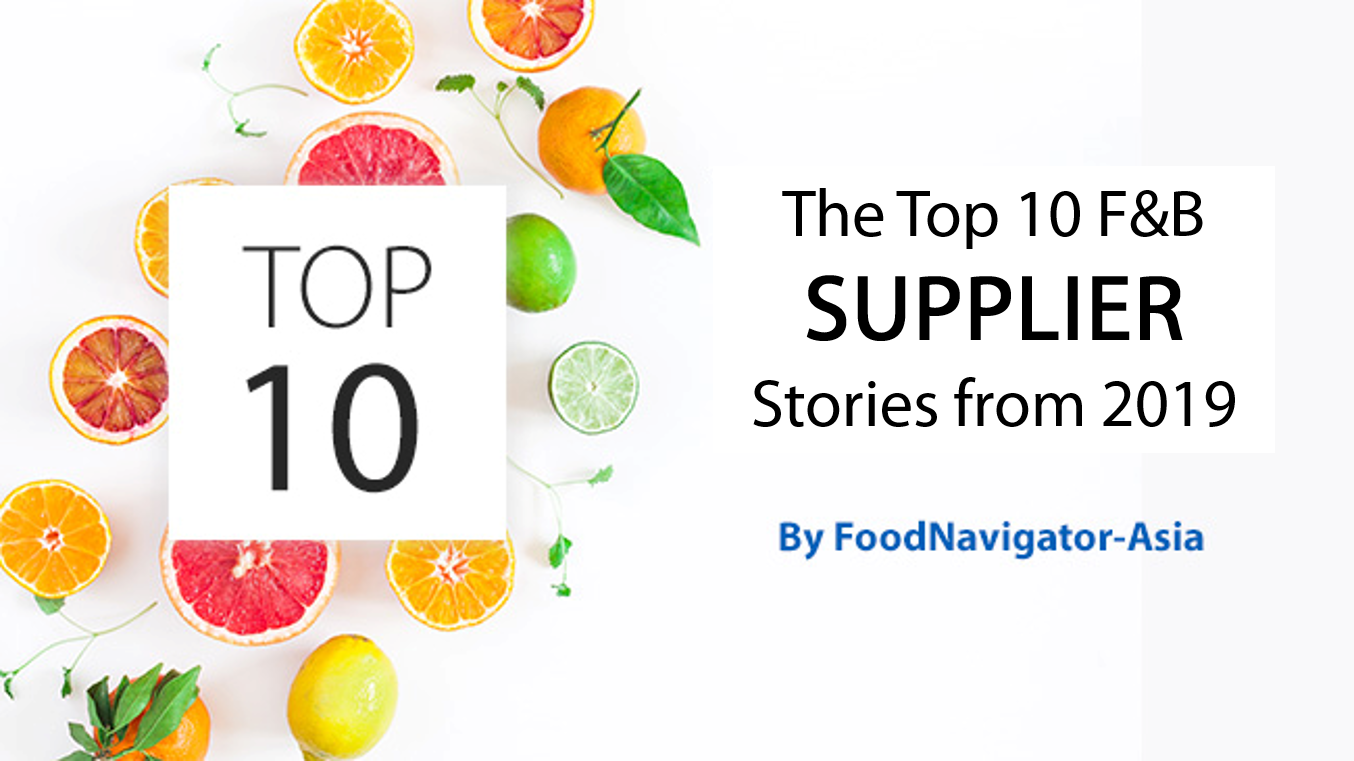‘No limit’ to benefits: Lakanto claims monkfruit sweetener beats out stevia in more ways than one
Global sweetener manufacturer Lakanto has highlighted the multiple benefits of monkfruit as a natural sweetener over stevia, on the heels of its successful bid to get monkfruit approved by Food Standards Australia New Zealand (FSANZ).
The Lakanto brand’s cornerstone products are its Classic Monkfruit 1:1 Sugar Substitute which replaces white sugar, and its Golden variant which replaces raw sugar. The Golden variant contains more monkfruit seed and peel as opposed to just flesh, giving it a more malted, caramel flavour.
Both will be available in Australia and New Zealand come July 2019.
“Although both monkfruit and stevia are natural sweeteners which are up to 300 times sweeter than sugar, monkfruit has no maximum daily intake limit, whereas stevia does,” Lakanto Australia and Saraya Australia/New Zealand General Manager Leon McIndoe told FoodNavigator-Asia at the Naturally Good Expo 2019 in Sydney.
Bakery market rising in Indonesia: PT Kaneka ramps up production with new factory
PT Kaneka Foods Indonesia (KFI), the JV between Mitsubishi Corporation and Kaneka Corporation, is setting up a new factory to meet rising demand in the nation’s beverage and bakery markets.
Located in the city of Bekasi, the new factory will produce filling and other processed oil products such as margarine.
Commercial production is expected to kick off in the first quarter of 2020, with production capacity expected to hit 15,000 metric tons each year.
A total of JYP$5bn (US$46m) will be invested in the factory.
“The move is aimed at enhancing KFI's presence in confectionary and bakery ingredients markets in fast-growing Indonesia,” Mitsubishi said in its media announcement.
From yeast to protein: Lesaffre embarks on new research amid booming interest in plant-based protein
Lesaffre is embarking on a research to develop yeast-based protein, in line with the growing interest in plant-based protein.
Speaking to FoodNavigator-Asia at the Food Ingredients Asia show in Bangkok, Joergen Lundgaard, MD of Lesaffre APAC, said that the move was to tap on the growing interest in plant-based protein.
“For us, we do a lot of yeast for baking applications, but now we also do research in yeast nutrition.
“This is similar to plant-based protein, just that it is based on yeast.
“This is made for those who are conscious about their nutrition intake, vegan, clean-label trend…These are the important trends that’s reflected in consumers’ preference,” Lundgaard said.
Microalgae’s major opportunity for alternative protein product development – Sophie’s Kitchen
Plant-based seafood firm Sophie’s Kitchen is now producing food-grade protein from microalgae, with firm confident it can become a long-term and more sustainable solution to animal and traditional plant-based proteins.
Eugene Wang, founder and CEO of Sophie’s Kitchen told FoodNavigator-Asia, “Animal protein is not sustainable in feeding 10 billion people on this planet. Plant-based protein are sustainable now, but not forever.”
Quoting pea protein as an example, “Currently, we are using pea protein in our foods. Many plant-based food companies are also using pea.
“Where do you get these extra supplies? More farming which also means some form of deforestation.”
‘All time high’: No end to Asia’s cocoa craze as Olam lists three factors driving market growth
With Asia’s interest in cocoa and chocolate at an ‘all time high’, Olam Cocoa has identified three key factors fuelling the region’s rising demand which looks set for continued increase across the next five years.
According to the Olam Cocoa researchers, chocolate demand at a global level will continue to rise across the next five years due to a ‘positive economic outlook which leads to higher levels of disposable income that can be spent on treat purchases’.
“In 2018, global chocolate consumption was recorded at 6 million metric tonnes, an increase of 2.5% over the past five years. A massive driver of this global demand for chocolate comes from Asia.” they said.
Three market growth factors here identified here: Cocoa powder strength in Asia, high cocoa consumption, and Indonesian production.
No synthetic and odour: Japanese firm launches odour-free red radish food colouring
Japanese ingredient firm San-Ei Gen F.F.I has launched a new ingredient – a red radish-derived food colouring that does not produce an off-flavour.
As red radish produces a strong stench, its use as a food colouring has been limited. San-Ei Gen F.F.I is seeking to overturn the situation by removing the off-flavour with a special purification technique.
The new food colouring, available in both liquid and powder forms, is able to produce a yellowish red colour at low pH.
In response to queries from FoodNavigator-Asia, Dr Yutaka Higashimura, deputy GM of food colour laboratory of the firm said that the usage of the product was “the same as other anthocyanins”.
Plant-based in Thailand: ADM aims to fill high-protein gap with new beverage solution
ADM Human Nutrition has launched what it claims to be the first plant-based high-protein beverage in Thailand, in hopes of addressing what it perceives to be a clear gap in the market.
Internal research by the company also claimed that although there are many high-protein drinks in the Thai market today, these are dairy-based and there are limited plant-based options so far.
In response to this, they pushed out a plant-based matcha-flavoured beverage solution during the show, as a prototype of how beverage companies could create new products of a certain flavour (e.g. matcha) and still keep up with the plant-based trend.
This was a combination of various ingredients, including matcha flavouring, soy protein bases and fibre, in tandem with an emphasis on unique ingredient combinations.
“Plant-based beverages and meat alternatives is the topic that everyone is talking about, both globally and here in Thailand,” ADM Human Nutrition General Manager South East Asia Dirk Oyen told FoodNavigator-Asia at the Fi Asia Thailand 2019 show in Bangkok.
'Reshaping' sweetness: Ingredion's stevia and Saraya's monk fruit latest additions to Australia and NZ's sugar reduction arsenal
Ingredion's new stevia sweetener, the BESTEVIA® Reb M Stevia Leaf Sweetener, has received approval from Food Standards Australia New Zealand (FSANZ) to be used as an 'intense sweetener'.
Launched jointly with Ingredion’s partnering company Sweegen, the new stevia sweetener is made from stevia leaf extract Rebaudioside M (Reb M).
According to Ingredion, the Reb M is extracted from the stevia leaf via a ‘bioconversion process’ that can ‘achieve high quantities […] economically unattainable from traditional stevia extraction methods’.
“BESTEVIA® Reb M stevia leaf sweetener is 200 to 300 times sweeter than sugar,” said Ingredion via its website.
“The process starts with the leaf of the stevia plant and results in a 95% pure Reb M stevia sweetener with significantly less bitterness and aftertaste than conventional stevia sweeteners, […] enabling levels of sugar reduction that were impossible or unpalatable until now.”
From blue tea to avocado coffee: AI tool to help firms launch new products ‘ahead of trend’
Kerry has teamed up with IBM’s artificial intelligence (AI) arm Watson to develop a new AI-based tool aptly dubbed Trendspotter, which it claims can help F&B manufacturers to identify and launch new products ‘ahead of trend’.
According to Kerry Vice President Marketing & Strategy APMEA Parth Patel, Trendspotter was developed in order to both launch F&B products ahead of trend as well as to reduce the lead time for innovation by up to seven months.
“Imagine, if as a branded food and beverage player you are able to launch a new product ahead of its trend. Basically, you are creating a runway for yourself and most probably you are going to be the only player, hence chances of success are high,” he told FoodNavigator-Asia.
“We aim to reduce the lead time for innovation and the chances of failure of new product launches, while increasing the probability of success by focusing on those trends which are emerging and not yet mainstream.”
DSM Hydrocolloids unveils new product brands to help customers better identify solutions
DSM Hydrocolloids, the specialty hydrocolloids arm of Royal DSM, has unveiled new branding for its gellan gum and xanthan gum portfolios, with the firm targeting new opportunities in ‘cross-segment’ applications.
The new brands GellaneerTM , ClariXanTM , and XanTremeTM were introduced on January 15 2019.
GellaneerTM is the brand name for the firm’s gellan gum offerings, while the ClariXanTM and XanTremeTM are the brand names for the firm’s xanthan gum offerings.
The main purpose of the branding exercise is to help customers better identify the types of solutions needed, Bernard Cheung, Director of Global Strategic Marketing at the firm told FoodNavigator-Asia.
For its gellan gum portfolio, the firm first entered the market about five to six years ago. It has since developed the use of gellan gum in dairy products, plant protein beverages, drinkable jellies, sports nutrition formulations, and elderly foods.





